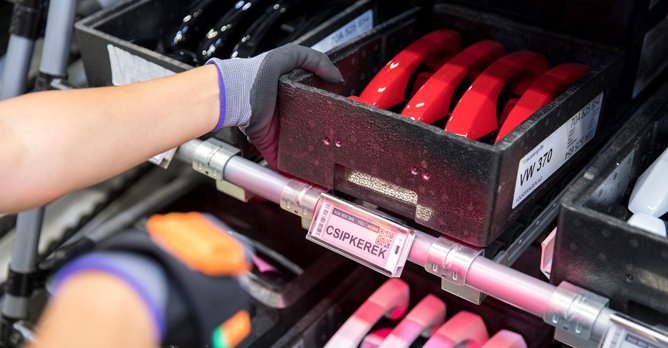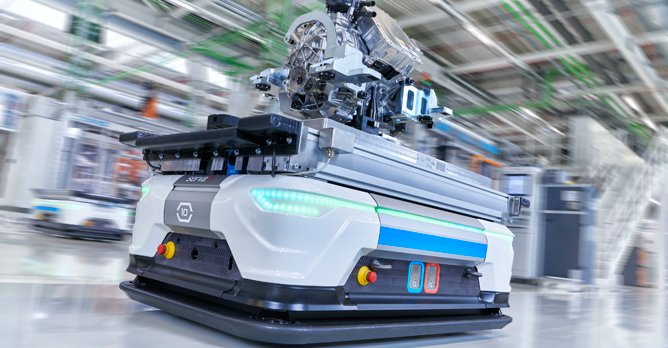Audi is developing smart logistics at its sites
16 Feb 2020|865 views
Audi is counting on smart technologies to simplify its logistics.

When names, numbers, or the arrangement of the parts in the shelf change, logistics specialists now no longer need to update the labelling by hand. Information can also be displayed at short notice quickly, for example if a part is out of stock and is to be replaced with a different part.
Now, one of the goals for the technology is to implement fully automatic updates. With digital shelf labelling, Audi is taking another step toward paperless order picking.
Digital helpers like these are just one example of the use of smart technology in the automotive manufacturer's Logistics division. "We are making targeted use of the advantages of digitalisation at our production sites worldwide," says Dieter Braun, Head of Supply Chain.

This highly flexible procedure is made possible by algorithms and machine learning, controlled by a smart IT system in the control station. This enables IT to keep track of all systems, all driverless transport vehicles, and the product, even without a fixed assembly line sequence.
Another smart solution brings Audi employees worldwide together is the use Virtual Reality (VR) to work together group-wide and across locations in virtual spaces. In packaging logistics, for example, employees have been training with VR for several years.
The training is designed like a video game and can be adapted to suit other activities as well - no programming skills are required. The company is also counting on VR technology in the production of the Audi e-tron GT, which will roll off the line at the Bollinger Hofe starting in 2020 together with the Audi R8.
As part of a pilot project, the logistics planners in Neckarsulm are currently testing how special containers can be planned and tested entirely in a virtual space and without any physical prototypes. These containers are used for the particularly sensitive parts of the cars, such as electronics, head lights, or the windshield. Developing the special containers with VR is less expensive and is also better for the environment.
Audi is counting on smart technologies to simplify its logistics.

When names, numbers, or the arrangement of the parts in the shelf change, logistics specialists now no longer need to update the labelling by hand. Information can also be displayed at short notice quickly, for example if a part is out of stock and is to be replaced with a different part.
Now, one of the goals for the technology is to implement fully automatic updates. With digital shelf labelling, Audi is taking another step toward paperless order picking.
Digital helpers like these are just one example of the use of smart technology in the automotive manufacturer's Logistics division. "We are making targeted use of the advantages of digitalisation at our production sites worldwide," says Dieter Braun, Head of Supply Chain.

This highly flexible procedure is made possible by algorithms and machine learning, controlled by a smart IT system in the control station. This enables IT to keep track of all systems, all driverless transport vehicles, and the product, even without a fixed assembly line sequence.
Another smart solution brings Audi employees worldwide together is the use Virtual Reality (VR) to work together group-wide and across locations in virtual spaces. In packaging logistics, for example, employees have been training with VR for several years.
The training is designed like a video game and can be adapted to suit other activities as well - no programming skills are required. The company is also counting on VR technology in the production of the Audi e-tron GT, which will roll off the line at the Bollinger Hofe starting in 2020 together with the Audi R8.
As part of a pilot project, the logistics planners in Neckarsulm are currently testing how special containers can be planned and tested entirely in a virtual space and without any physical prototypes. These containers are used for the particularly sensitive parts of the cars, such as electronics, head lights, or the windshield. Developing the special containers with VR is less expensive and is also better for the environment.
Latest COE Prices
December 2025 | 1st BIDDING
NEXT TENDER: 17 Dec 2025
CAT A$105,413
CAT B$123,900
CAT C$76,501
CAT E$123,000
View Full Results Thank You For Your Subscription.




















